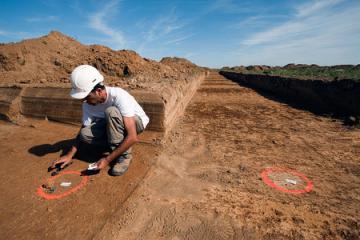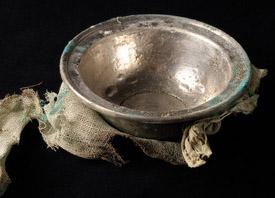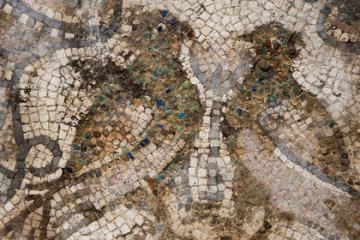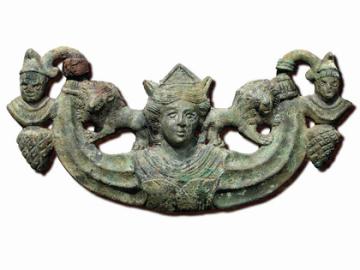You are here
News
- (-) Remove Antiquity filter Antiquity
- (-) Remove Discoveries filter Discoveries
The excavation of the site of the former Clinique Saint-Louis at Angers, curated by the State (Regional Archaeological Service, Pays d-de-la-Loire), is being carried out by a team of Inrap archaeologists. This site covers an area of 9,000 square metres. At present, the vestiges of a sanctuary dedicated to the worship of Mithra, a god of Indo-Iranian origin is being brought to light.
During the construction of a housing project at Propriano (Southern Corsica) by the Limat Promotion property group, Inrap archaeologists have unearthed, by order of the State (DRAC Corsica), a classical construction, a collection of churches and an Antique necropolis.
Before the construction of the Seine-North of Europe waterway under the technical direction of the Voies navigables de France, and curated by the State (Drac), the French National Institute of Archaeological Research (Inrap) is carrying out a programme of archaeological evaluations, the most extensive at present in Europe.
Gevrey-Chambertin, located 12 km from Dijon, is world famous for its Burgundy wine. Viticulture has been practiced there since the Gallo-Roman period.
Inrap archaeologists are at present excavating two important sites in the historical centre of Reims. Curated by the Regional Archaeological Service (Drac Champagne-Ardenne) they add decisively to our knowledge of the history of Reims which, during the Gallo Roman period, was one of the most important towns of the Roman Empire, covering more than 600 hectares.
In advance of a landscaping project realized by Euroméditerranée on the esplanade of the Marseille Cathedral (also known as "The Major"), a preventive excavation is being conducted by an Inrap team until the end of November 2008.
The catacomb of saints Marcellinus and Peter in Rome has been undergoing systematic excavation since 2005. The research involves the Pontifical Commission of Sacred Archaeology (Holy See), the CNRS, the Ecole française of Rome, the French National Institute for Preventive Archaeological Research and the Maison des Sciences de l'Homme of Aquitaine (MSHA), who are all collaborating on this project.
Located between the Bavay-Cambrai and Bavay-Tournai Roman roads, on the frontier between Nervien and Atrebates territories, the ancient town of Famars, covered an area of 80 hectares, but curiously figures neither in the Peutinger Table nor in the Antonine Itinerary.ts ancient name, Fanum Martis, indicates that there was probably a temple dedicated to Mars, still to be discovered. A city of Gallia Belgica, it was also an important Roman military camp (castrum) whose walls are still visible.









